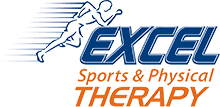Neck pain is a common ailment that can stem from various causes, including poor posture, muscle strain or other underlying health conditions. Neck pain will affect nearly 1 in 3 people each year. Doing targeted physical therapy exercises at home, under the guidance of a physical therapist, can help relieve your neck discomfort, improve your flexibility and potentially prevent future issues.
Common causes and risk factors of neck pain
Before jumping into exercises, it’s essential to understand the potential causes of neck pain. Common factors can include:
- Poor posture — Sitting slouched or with improper head and neck positions for prolonged periods can cause muscle strain and neck pain.
- Muscle strain — Overusing neck muscles can be associated with activities like extended computer use or holding the head in an awkward position for a prolonged period.
- Herniated disc — Discs between the vertebrae in the neck can become herniated, which puts pressure on nerves and causes pain.
- Arthritis — Conditions like cervical osteoarthritis can lead to the degeneration of neck joints. This can cause pain and stiffness in the neck.
- Injuries — Trauma from accidents, falls or sports-related injuries can cause neck pain.
- Stress and tension — Emotional stress and tension can have physical symptoms. This can manifest in the neck, causing discomfort.
Stretching and strengthening at-home neck exercises
Before beginning a new stretching and strengthening routine, consult your doctor or physical therapist. They can prescribe the best exercises and number of repetitions based on the cause and severity of your symptoms. Strengthening exercises that may be recommended for you to strengthen your neck at home can include:
- Neck retraction exercise — Sit or stand with your back straight. Gently tuck your chin down toward your chest. Hold for five seconds and then release.
- Neck flexor exercises — Lie on your back with a small rolled-up towel under your neck for support. Slowly nod your head forward, keeping your chin tucked. Hold for five seconds and return to the starting position.
- Neck lateral flexion — Sit or stand with your back straight. Slowly tilt your head to one side, bringing your ear toward your shoulder. Hold for 15 to 30 seconds. You will feel the stretch along the opposite side of your neck. Repeat the stretch on the other side.
- Neck rotation exercise — Sit or stand with your back straight. Turn your head to one side, looking over your shoulder. Hold for 15 to 30 seconds. You will feel a gentle stretch. Turn to face forward and repeat on the other side.
- Neck extension exercise — Sit or stand with your back straight. Gently tilt your head backward. You will be looking at the ceiling. Hold for 15 seconds and return to the starting position.
Stretching exercises that can be beneficial for neck pain relief can include:
- Upper trapezius stretch — Sit or stand with your back straight. Gently tilt your head to one side, bringing your ear toward your shoulder. Use your hand on the opposite side to apply gentle pressure for an added stretch. Hold for 15 to 30 seconds and switch sides.
- Levator scapulae stretch — Sit or stand with your back straight. Rotate your head and bring your chin toward your chest. Place your hand on the back of your head and apply gentle pressure to deepen the stretch. Hold for 15 to 30 seconds.
- Chin tucks — Sit or stand with your back straight. Gently tuck your chin down toward your chest without tilting your head forward. Hold for five seconds and then release.
- Scalene stretch — Sit or stand with your back straight. Tilt your head to one side, bringing your ear toward your shoulder. Place the hand on the same side gently on your head, applying slight pressure for your stretch. Hold for 15 to 30 seconds and switch sides.
Additional tips to help improve neck health
Exercise is a good place to start to help improve neck health. It can also be beneficial to add other methods to help prevent neck pain and improve your neck health:
- Good posture — Ensure that your head is aligned with your spine when you are sitting at a desk, using a computer or standing.
- Regular breaks — If your work involves prolonged periods of sitting, taking a break to stretch and change positions can help.
- Ergonomic workspace — Setting up your workspace to support good posture is essential. You can do this by ensuring that your monitor is at eye level and sitting in a comfortable chair.
- Hydration — Proper hydration can help support the elasticity of the intervertebral discs in your spine.
When to seek help
While these exercises and tips can be beneficial, knowing when to consult a health care professional is essential. Seek help if you are experiencing:
- Persistent or worsening pain — If your neck pain doesn’t improve with at-home exercises or physical therapy appointments, let your physical therapist or doctor know.
- Accompanying symptoms — If you are experiencing numbness, tingling, weakness or radiating pain, consult a health care provider.
- Recent injury — If your neck pain results from a recent injury or trauma, it’s imperative to seek immediate medical attention.
Excel Sports & Physical Therapy can empower you to achieve better neck health
At Excel Sports & Physical Therapy, we understand how neck pain can affect your day and quality of life. Our team of expert physical therapists can help guide you through strengthening and stretching exercises that can help improve your neck health. Under their guidance, you can see improved flexibility and reduced discomfort. However, it’s essential to approach these at-home exercises with caution and stop doing them if you experience any new or worsening symptoms. Come back in to see us. Taking a proactive approach to your neck health can help lead you to increased well-being and a more comfortable daily life.
Request an appointment or call us today at Affton, North O’Fallon, St. Louis, Creve Coeur, Ellisville, Saint Peters, O’Fallon, Saint Charles, Warrenton & Wentzville, MO centers.

